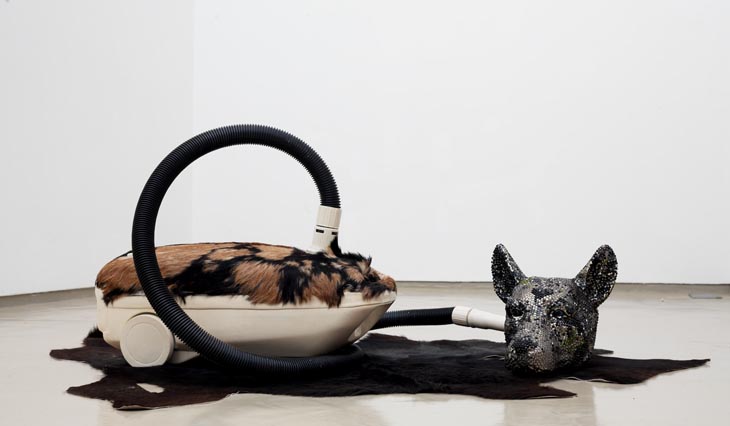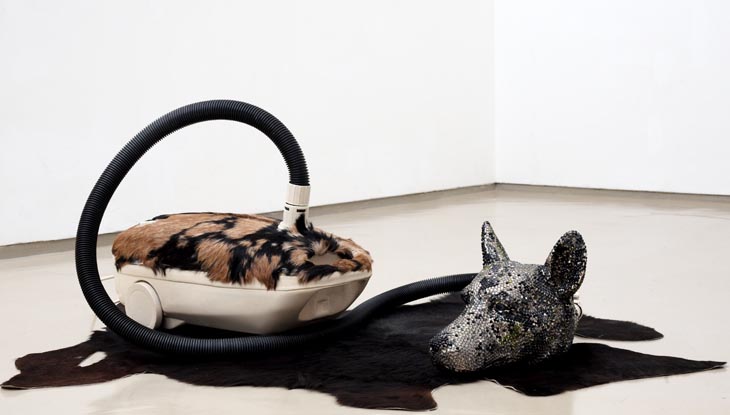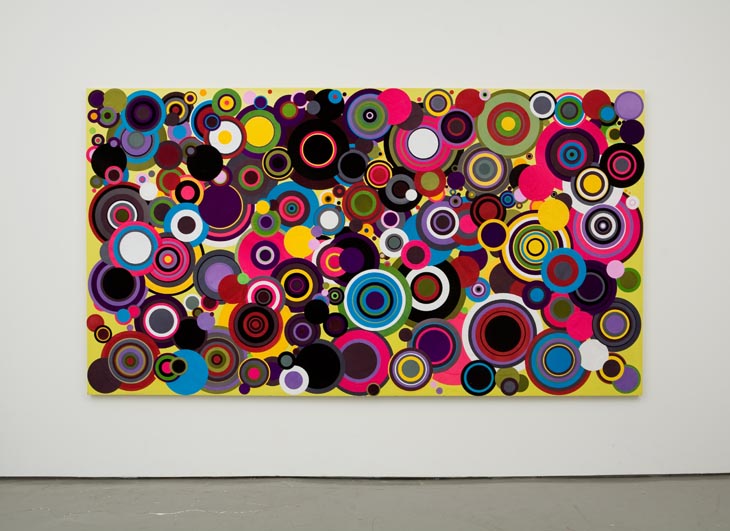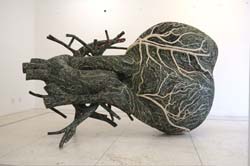




ARTIST:
Bharti Kher
In part inspired by artists such as Hieronymus Bosch, Francisco Goya and William Blake, Bharti Kher references magical beasts, mythical monsters and allegorical tales in which they might feature in her work. The blue sperm whale is one of the world’s largest animals. Unable to find sufficient scientific documentation about its anatomy, Kher invented the appearance of the whale’s heart for An Absence of Assignable Cause. Created in fibreglass, the artist has decorated the enormous heart and protruding veins and arteries with different coloured bindis.
Relocating to New Delhi after studying art in Newcastle, England, Bharti Kher is an artist committed to exploring cultural misunderstandings and social codes through her art practice. Likening herself to the well intentioned ethnographer investigating her culture, Kher delivers a very forceful reinterpretation of modern India. In Hungry dogs Eat Dirty Pudding, a domestic hoover is covered in garish animal skins. These are the kind of inventive hybrid creations that Bharti Kher has made her own. Evoking the early work of Swiss artist Méret Oppenheim who covered a teacup, saucer and spoon with fur, Kher’s sculptural works appear incredibly surreal in their construction.
Highly regarded for her sculptural works, Kher has also produced paintings and installations that challenge cultural and social taboos in India. Untitled is composed of multi-layered and multi-coloured bindis. These numerous circles of coloured felt are concentrated on painted board. A reoccurring motif in her work, like the wheel rooted to the centre of the Indian flag, the bindi is at the centre of social and cultural identity and can be seen as a sign of the marital woman and her place in society. The bindi also traditionally represents a third eye, linking the spiritual and material world. In recent times, it has been reformed as a fashion accessory, available in different colours and shapes. With this work, the artist is signalling a need for social change and challenging the role of the women entrenched in tradition, whilst also commenting on the commoditisation of the bindi as a fashion accessory.




